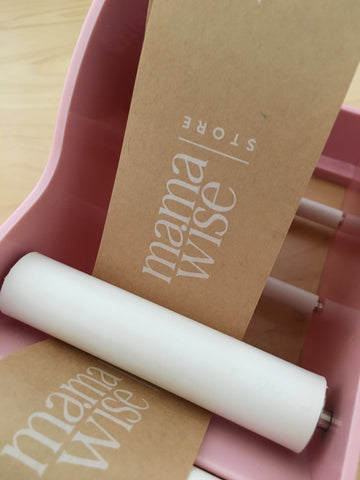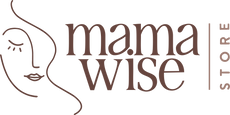The Eco Promise
I've made it my mission to include eco-friendly packaging and postage solutions across the store.
If it's not biodegradable or compostable, I've ensured its recyclable or reusable.
Here's a run down of the product packaging, and how your order is packaged eco-style when it's shipped.
The Product Packaging
1. Stand Up Pouches
It was important to ensure optimal freshness was maintained in the products packaged in the stand up pouches (herbal teas, Labourade and Peri Herb Bags).
Once heat sealed, these pouches keep their contents super fresh!
But, it was also important to be able to recycle such flexible soft plastics after their use.
The beauty of these pouches is that they can be deposited into the REDCycle collections bins located at most Coles and Woolworths supermarkets - at over 1900 locations Australia wide.
The REDCycle program is a recovery initiative for post-consumer soft plastic implemented by RED Group, a consulting and recycling organisation in Melbourne.
 The program allows consumers to collect plastics that they can’t recycle at home and drop them off at participating supermarkets with REDcycle bins.
The program allows consumers to collect plastics that they can’t recycle at home and drop them off at participating supermarkets with REDcycle bins.
This is a great option and gives the used Mamawise pouch more chances at ‘life’ – the true meaning of recycling and supporting a circular economy.
This program has now diverted over 14,351 tonnes of soft plastic from landfill. Thanks to the Australians that are now returning over 4 million pieces of soft plastic to a REDcycle bin every single day!
2. Glass bottles
The herbal extracts and the Peri Prep oil come in glass amber bottles.
Glass is considered to be inert, which means it won’t break down or seep chemicals into the products. The amber tint protects the contents from UV light (photooxidation), preserving the active ingredients.
Tip: These can be washed out with warm, soapy water and reused, repurposed or recycled. Add a spray nozzle lid to the 500ml bottle and use for DIY cleaning solutions, e.g vinegar with water and lemon and/or eucalyptus essential oils. Or fill from bulk home eco-cleaning solutions at health stores. Or store your DIY massage oil blend in them.
3. Cylinders
These sturdy, brown cylinders can be reused, repurposed or recycled. If they come with a liner/inside bag, this is biodegradable.
The Oaty Soak is also available to repurchased as a refill bag only.
Tip: Repurpose these for any dried products; more herbal tea, spices, salts, seeds, cereals, baking goods, bath salts or washing powder. In my house, they've been used as a pen holder, a money jar and even for scrunchie storage!
4. Recyclable plastics
Where plastic is used, the most recyclable form has been chosen.
These include #1 PET (Polyethylene Terephthalate) and #2 HDPE (High-Density Polyethylene).
These are the mostly commonly recyclable forms.
Tip: Keep the atomiser spray bottle, wash and reuse as a mister, for your face or indoor plants! Keep the pump bottle and use for hand soap or lotion. Reuse the containers for storage, or the powder shaker bottle for DIY herb seasoning blend.
Packing & Postage of Orders
 The Mamawise Store has joined the Noissue Eco Packaging Alliance.
The Mamawise Store has joined the Noissue Eco Packaging Alliance.
This is a growing community of brands who choose to utilise sustainable packaging and support reforestation practises.
1. Tissue paper
This is eco-friendly, acid-free and made of wood pulp sourced from sustainably-managed forests certified with Forest Stewardship Council (FSC).
It’s also printed with soy-based ink, a sustainable alternative to traditional petroleum-based ink.
It's biodegradable and can be composted at home without generating waste or toxins, as it's free from sulphur and lignin.
2. Packing tapes
The Mamawise Store packing tape is paper-based, made from 100% recycled materials and is water-activated. It bonds using gum instead of nasty toxic chemicals.

The paper it's made from is sourced from a forest and supply chain that is managed responsibly and sustainably. This FSC certification ensures it's fully recyclable, compostable and biodegradable.
The print on the tape is done with eco-friendly inks made from soybeans, a renewable resource. During the printing process they also produce low levels of VOCs (Volatile Organic Compounds) which reduce air pollution.
Printing with soy inks leaves no nasty petroleum chemicals behind when decomposing.
 The clear packaging tape used to seal mailing boxes is made from 90% renewable resources.
The clear packaging tape used to seal mailing boxes is made from 90% renewable resources.
The film is derived from plants and the stickiness is made from natural rubber. It's also biodegradable and compostable!
3. Address label
The address labels used on the front of parcels are compostable. Simply peel off to reuse the box/bag and dispose of label.
4. Mailing boxes
These are made from sturdy cardboard so are reusable and/or recyclable.
5. Bubble wrap
6. Filling
These are made from plant based starches and they are compostable, water soluble or reusable.
7. Post bags
Where boxes aren't used, compostable bags (shown below) from the Better Packaging Co are used.

What if I don't have a home compost system, how long with they take to degrade?

This will depend on the conditions they’re placed in. In a standard home compost, the compostable post satchels have been certified to biodegrade within 180 days (approx 6 months). As litter (e.g under a tree) or within regular landfill rubbish it still happens, yet is much slower. The Australian Standard is one of the most rigorous in the world and includes a worm toxicity test which means that the comPOST Packs are safe to be eaten by them!
Why should I consider setting up a home compost?
Did you know, approximately half of what households send to landfill is compostable material?!
10% is from the garden and whopping 40% is from the kitchen.
There are a number of ways to compost depending on your situation, there’s a great guide here.
If you’re in Australia you might be able to save up to 80% on compost bins and worm farms with your local council!
